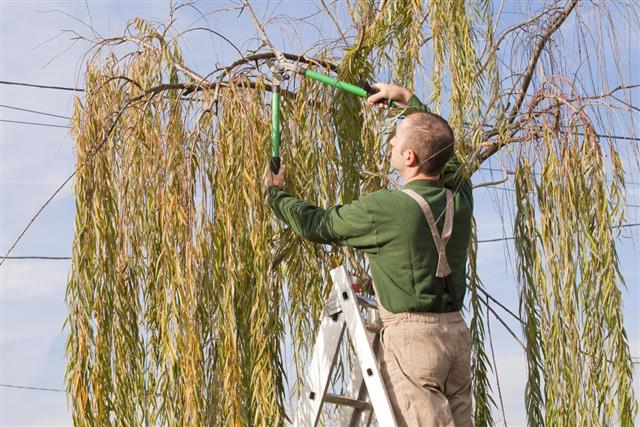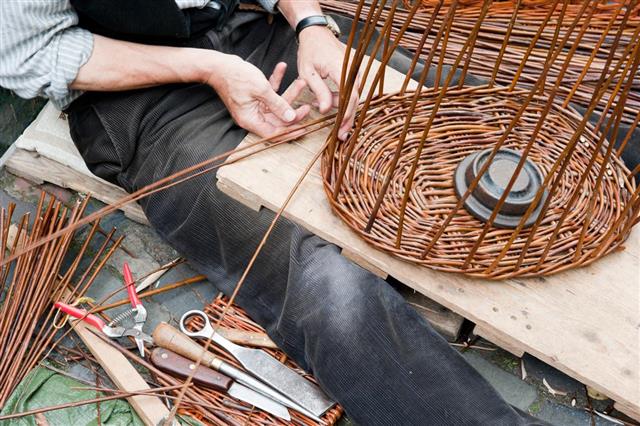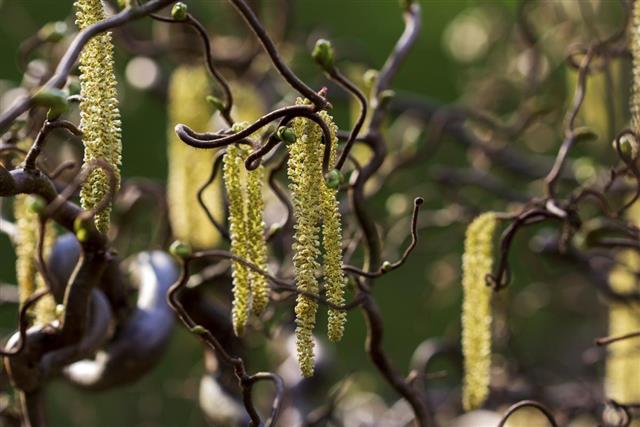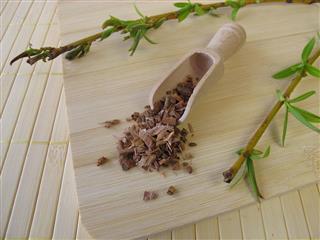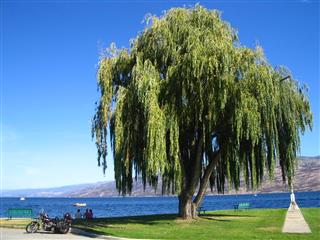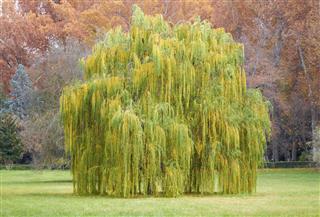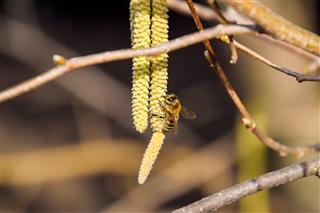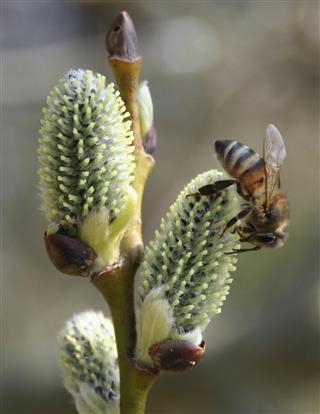
A deciduous tree with drooping branches, the weeping willow is widely grown for ornamental purposes. This article provides a brief overview of the tree, which symbolizes grief.
The weeping willow (Salix babylonica) is a tree that belongs to the genus Salix in the family Salicaceae. This genus comprises around 400 species of trees and shrubs. The narrow-leaved species that grow as shrubs are called osiers, and those with broad leaves are called sallows. Certain species like the weeping willows grow as trees, whereas dwarf weeping willows (Salix herbacea) are creeping shrubs with a maximum height of around two to three inches.
The weeping willow is native to China, but is commonly grown in the United States and Canada. The tree is otherwise known as Peking willow or Babylon willow. The name weeping willow is derived from its droopy canopy, which is the main attractive feature of the tree that is widely used in landscaping. The weeping willow is one of the first trees to bear leaves in the spring and the last one to lose the foliage in the fall. This tree looks spectacular with its glossy green foliage that turns yellow during the fall. Owing to its looks, the weeping willow is often associated with religion, mythology, literature, and poetry.
Physical Features
As mentioned above, the most prominent feature of the weeping willow is its drooping branches with shimmering leaves. It has a short trunk and wide-spread branches that give a distinct shape to the whole tree. The brown-colored bark is used for therapeutic purposes. The milky sap of the tree contains salicylic acid, which was used for medicinal purposes during the nineteenth century. However, it was soon replaced with a synthetic version (aspirin) that was developed in 1897. The weeping willow is a fast-growing tree, which can have a height of around 45 to 70 feet, when fully grown.
The long and narrow leaves have a width of around 0.25 to 0.5 inch, and a length of 1.5 to 2.5 inches. They are alternate and spirally arranged; with pointed tips, serrated edges, and pale undersides. Weeping willows bloom early in the spring and their flowers are arranged in catkins (cylindrical, spike-like inflorescence). The tree is dioecious, and it has a short lifespan. The wood of the tree is used for making cricket bats, flutes, whistles, boxes, fish traps, and broom handles.
Growth Conditions
Weeping willows are often seen near water sources like streams, rivers, and ponds. These trees have the ability to absorb water, and they are grown in places with puddles and mud. Weeping willows are also planted to prevent soil erosion. They can be propagated using stem cuttings or seeds. Ideal growth conditions include moist and well-drained soil, and partial to full sun. Weeping willows should not be planted near buildings or other structures, as their roots can interfere with underground pipes, wires, and drainage.
Regular watering is one of the most important aspects of weeping willow tree care. The tree needs a regular supply of water during dry seasons, if there is no water source nearby. So, it can tolerate drier soil, if it receives regular watering. Pruning is often done for removing branches that touch the ground. Weeping willows are prone to fungal problems like willow scabs, black canker, and willow blight; and bacterial diseases like crown gall. Pests like borers, caterpillars, aphids, and scales can affect these trees. They cannot tolerate frost, and grow best in USDA zones 5 to 10.
Though weeping willows are widely grown as ornamental trees, they have a tendency to turn invasive. You can plant this tree in your yard for its sheer beauty.
